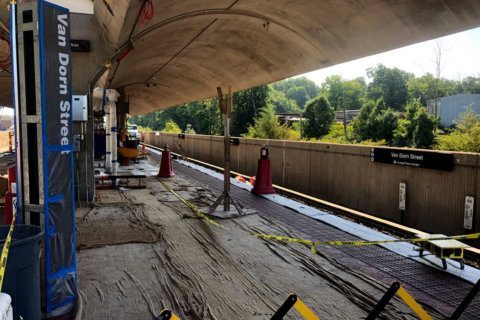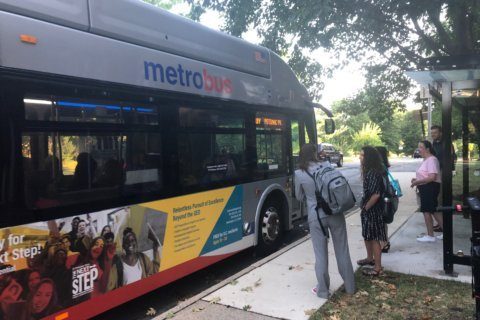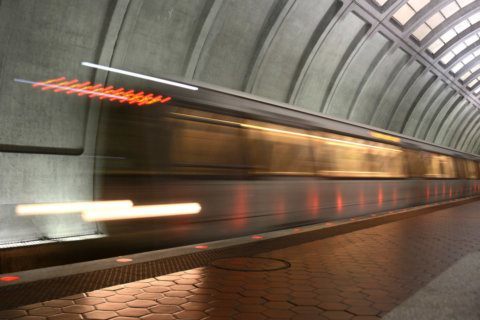Just ahead of next week’s reopening of six Blue and Yellow Line stations south of Reagan National Airport, new data showed that Metro’s summer shutdown drove more than 10% of Virginia riders off Metrorail.
Metro is in the process of taking back control of the stations from the construction contractor and is testing and reconnecting systems for station announcements, digital signs, fire alarms and escalators.
Ridership drop
Rail ridership was down 16% at Virginia stations in June compared with the same month last year, with a 12% decline in the weekday average. Metrobus usage in Northern Virginia declined slightly in June.
In July, data provided to the Northern Virginia Transportation Commission showed a 10% drop in overall and weekday Metrorail trips in Virginia. July bus ridership rose 6%, with an increase of 3% on weekdays compared with the same time last year.
Metro has reported some significant increases in bus ridership on some lines during the shutdown, but has somewhat limited information about the number of people riding free shuttle buses or taking advantage of free parking at closed stations. Metro did not collect its usual parking data at Franconia-Springfield, Huntington or Van Dorn Street. The data is typically based on how many people pay to exit the lots.
Separate traffic data previously provided by the city of Alexandria showed that a significant number of people added to traffic during the shutdown by driving, with travel speeds through the city generally significantly slower.
Back to normal (mostly) Monday
Metro expects to reopen all of the closed stations Monday morning. That’s also when nearly everything that was offered to help people who had their commutes disrupted — either because they weren’t able to take Metro or because they were stuck in more traffic than usual — is due to disappear or flip back to normal.
Friday is the final day for special OmniRide shuttles from park-and-ride lots to two Virginia Railway Express stations. Free Metro shuttle bus services end Sunday night. Extra scheduled trips on several key bus routes will be no more.
Metro parking fees will also be reinstated Monday at Franconia-Springfield, Huntington and Van Dorn Street, including the additional fees for people who pay with credit cards or with a SmarTrip that was not just used to ride Metro (i.e. some VRE riders).
Metro is optimistic that riders will return.
Among the handful of things that will remain are the discounted $1 DASH Bus fares for riders using the agency’s new mobile app to pay. The discount will now last through the end of the year.
For other riders, paying for a one-way DASH Bus trip with cash or SmarTrip is due to go, on Sept. 15, from $1.75 to the $2 fare charged by Metrobus and many other local bus systems.
Metro also expects some work to continue at stations after they reopen, but not in a way that will affect rush-hour service.
For example: Work on bus loops or kiss-and-rides outside stations, such as Eisenhower Avenue, will not be finished; and single tracking is scheduled to continue at the Franconia-Springfield and Huntington stations to allow for work on one side of each platform.
Metro believes that single tracking will not affect the frequencies of trains.
Future shutdowns
After this shutdown work is done, Metro plans shutdowns next year on the Green Line north of Fort Totten to Greenbelt and the Orange Line west of Ballston to Vienna.
Metro has not yet formally announced specific timing of the 2020 closures or whether any of the work will be done with round-the-clock single tracking rather than total closures. Metro plans to schedule at least the most significant closures during the summer.
When the 2019 shutdown was announced, Metro had hoped to reopen the stations at the end of Labor Day weekend, but announced about six weeks before the closure began that it would be extended by a week.
In 2021, similar work is planned at the New Carrollton end of the Orange Line, as well as at Addison Road, Arlington Cemetery and Reagan National on the Blue Line. The airport station has three tracks, so work there might not be as disruptive as it would be at other stations.







